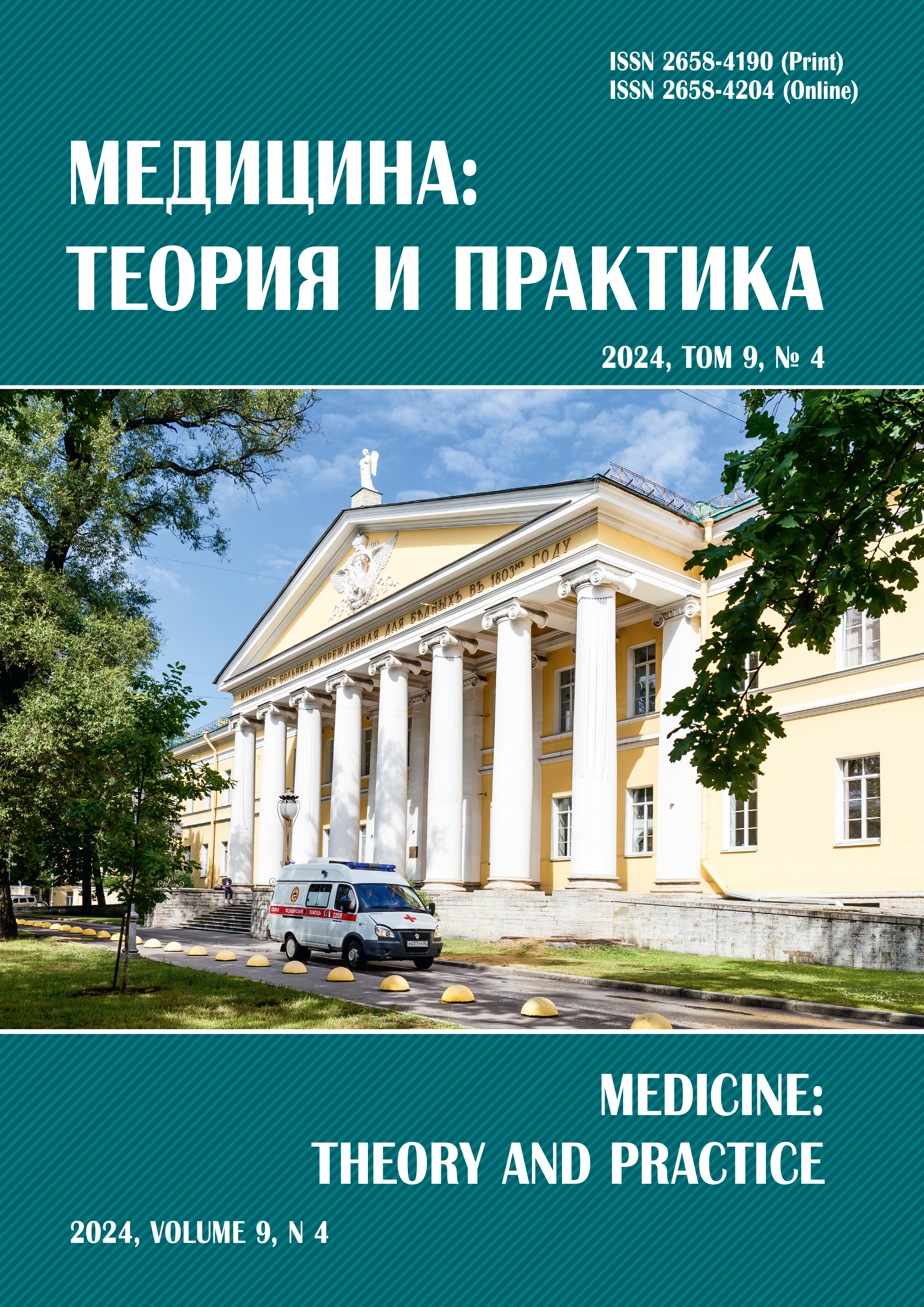EVALUATION OF NON-SPECIFIC BRAIN SYSTEMS FOR EVALUATION OF EARLY CAROTID ENDARTERECTOMY IN ATHEROTHROMBOTIC STROKE
Abstract
Introduction. The neurophysiological methods of studying evoked brain activity have acquired the greatest relevance. They are able to identify functional disorders that are of great prognostic
value. The aim of the study is to study the dynamics of indices of somatosensory and auditory brainstem evoked potentials in patients with ischemic atherothrombotic stroke of varying severity. Materials and methods. We examined 305 ischemic stroke patients of moderate severity, who underwent carotid endarterectomy in the first 2 weeks the development of the stroke. Analyzed the dynamics of the amplitude- latency indices of somatosensory and auditory brainstem evoked potentials in the postoperative period. We compared the dynamics of power spectra, latency inter-peak intervals and amplitude of auditory brainstem evoked potentials in the postoperative period. Results. A decrease in the amplitude of N20–P23 SSEPs on the side of the clinically intact hemisphere, the absence of reliably significant changes in the latency, amplitudes and values of interpeak intervals of ASEPs during the three weeks of the postoperative period are an unfavorable prognostic factor for the recovery of impaired functions after surgery. Conclusion. Performing surgical intervention in the first two weeks after the development of a stroke in patients with neurological deficit on the NIHS scale <7 leads to the registration of reliably significant changes in latency, amplitudes and the magnitude of interpeak intervals in the dynamics of the postoperative period, which correlates with a more rapid reduction in neurological deficit.
References
Баркаускас Е., Мескаскене А., Лаурикенас К. Риск связанный с каротидной эндартерэктомией у пациентов с инфарктом головного мозга. Ангиология и сосудистая хирургия. 2005;1(1):103–111.
Дуданов И.П., Белинская В.Г., Жуков А.Е. и др. Активная реперфузия головного мозга в острейшем периоде ишемического инсульта. Изменение диагностического стандарта. Российский нейрохирургический журнал им. проф. А.Л. Поленова, специальный выпуск материалы XIV Всероссийской н.-п. к. «Поленовские чтения», 15–17 апреля 2015 г. СПб. 2015;VII:17–19.
Abu Rahma A.F., Robinson P., Holt S.M. et al. Perioperative and late stroke rates of carotid endarterectomy contralateral to carotid artery occlusion: results from a randomized trial. Stroke. 2000; 31(2):1566–1571.
Ahmed N., Steiner T., Caso V., Wahlgren N. Recommendations from the ESO-Karolinska Stroke Update Conference, Stockholm 13–15 November 2016. European Stroke Journal. 2017;2(2):95–102. DOI: 10.1177/2396987317699144.
Bruls S., Van Damme H., Defraigne J.O. Timing of carotid endarterectomy: a comprehensive review. Acta Chirurgie Belgia. 2012;112(1):3–7.
Capoccia L., Sbarigia E., Speziale F., Toni D., Biello A., Montelione N., Fiorani P. The need for emergency surgical treatment in carotid-related stroke in evolution and crescendo transient ischemic attack. J Vasc Surg. 2012;55(6):1611–1617. DOI: 10.1016/j.jvs.2011.11.144.
Crozier J.E., Reid J., Welch G.H., Muir K.W., Stuart W.P. Early carotid endarterectomy following thrombolysis in the hyperacute treatment of stroke. British Journal Surgery. 2011;98(2):235–238.
Malcharek M.J., Herbst V., Bartz G.J., Manceur A.M., Gille J., Hennig G., Sablotzki A., Schneider G. Multimodal evoked potential monitoring in asleep patients versus neurological evaluation in awake patients during carotid endarterectomy — a single-centre retrospective trial of 651 patients. Minerva Anestesiol. 2015;6:4–10.



